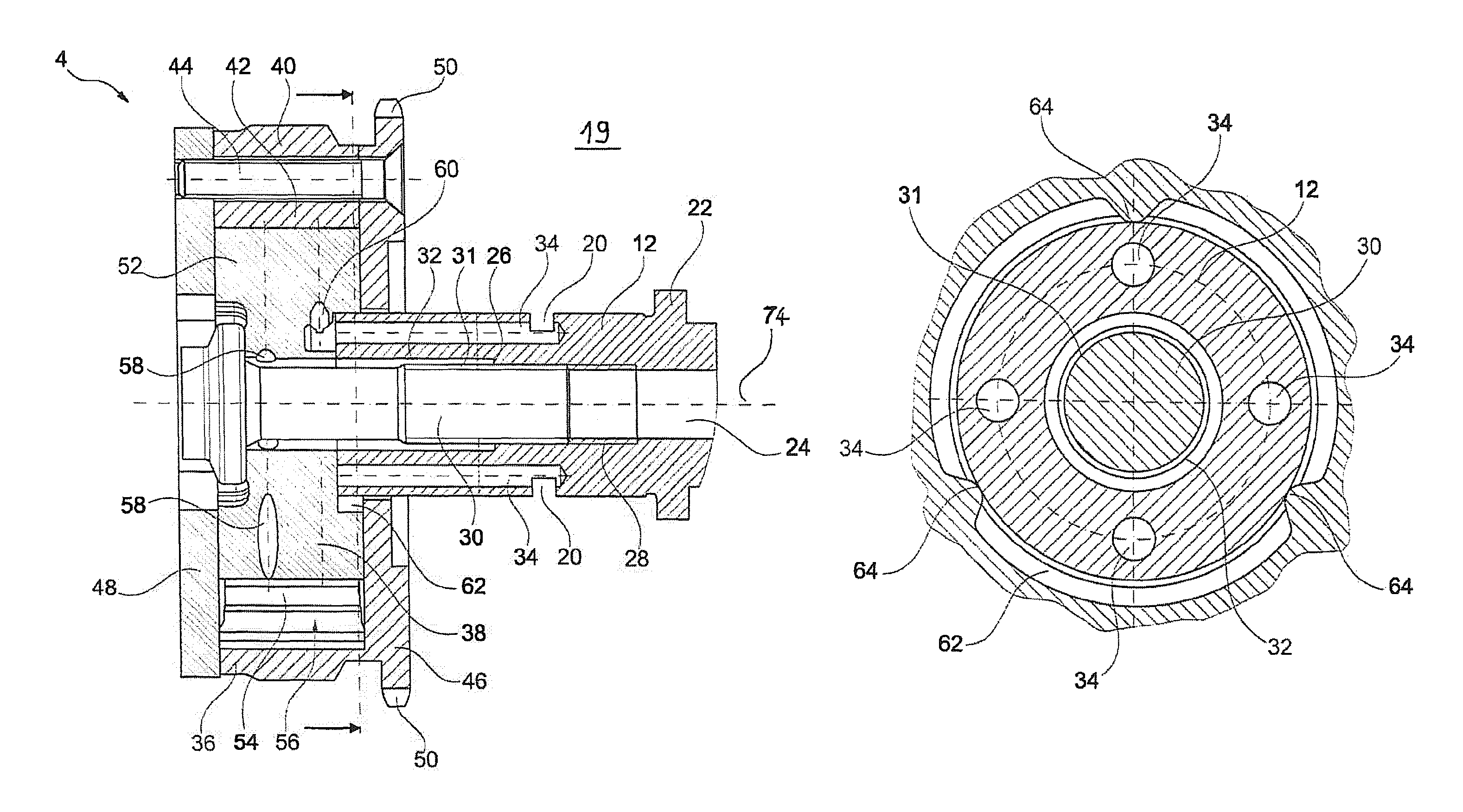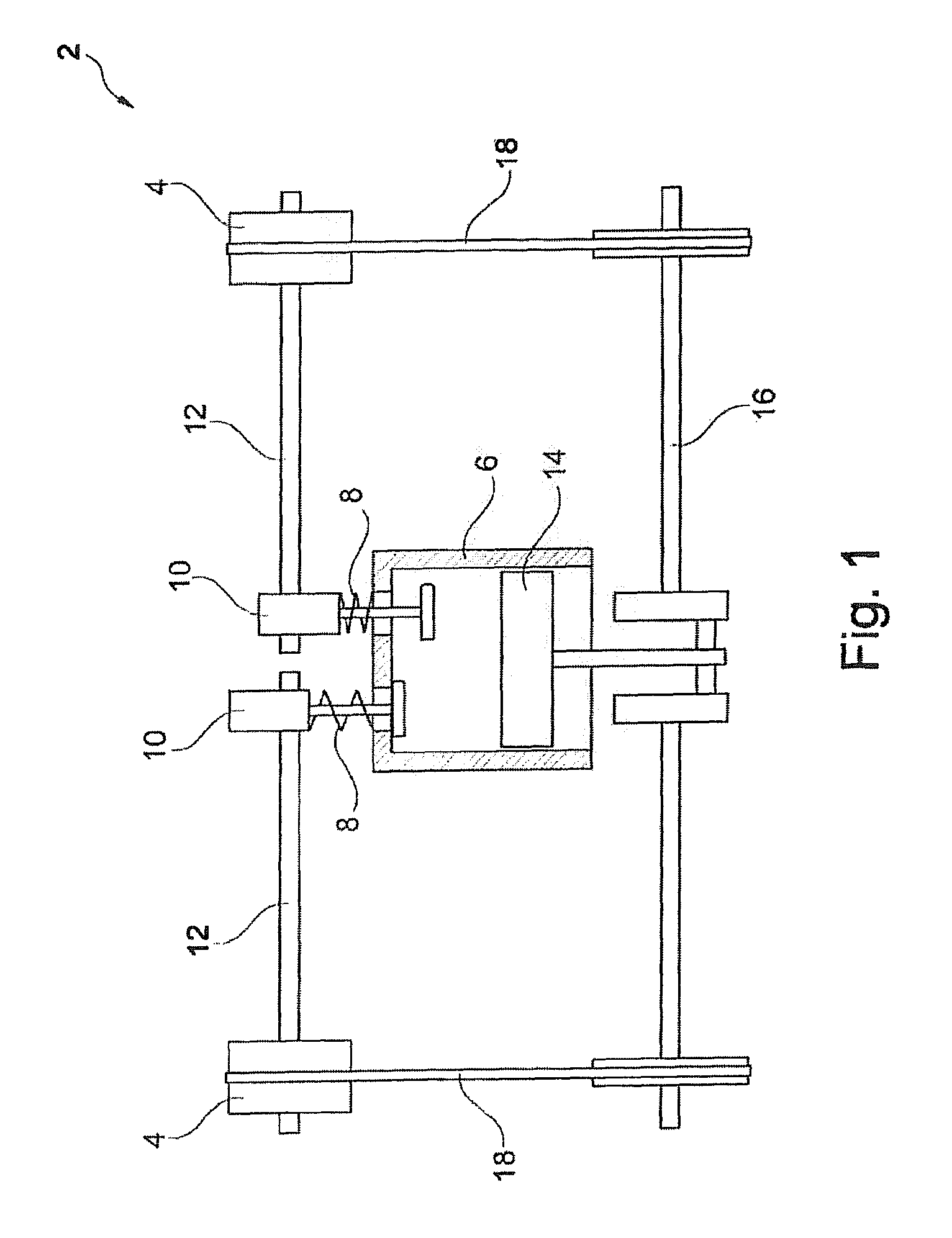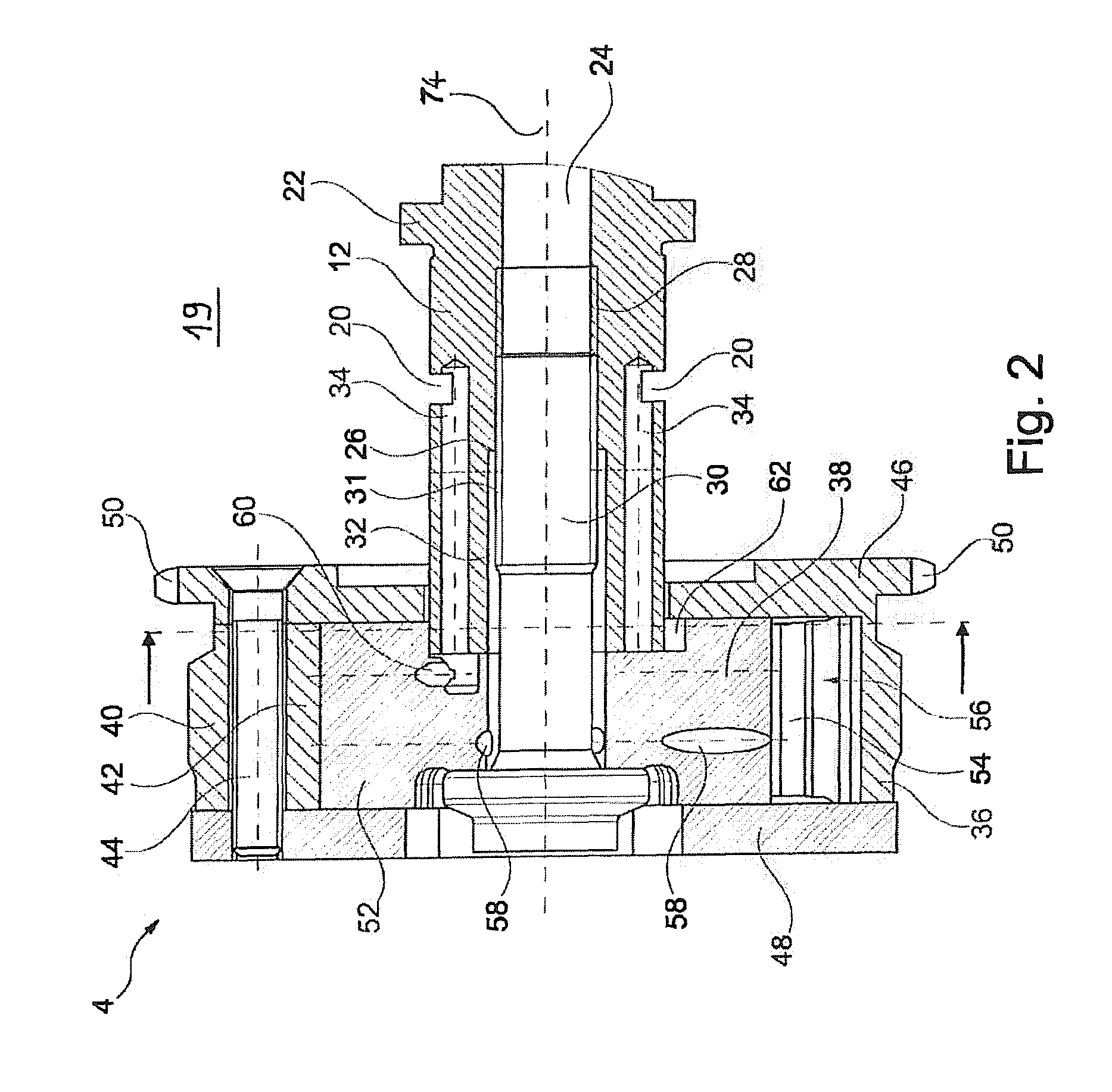Camshaft adjusting device
a technology of adjusting device and camshaft, which is applied in the direction of valve arrangement, machine/engine, mechanical apparatus, etc., can solve the problems of increasing manufacturing cycle time and manufacturing cost, and achieve the effect of convenient and economical manufacturing
- Summary
- Abstract
- Description
- Claims
- Application Information
AI Technical Summary
Benefits of technology
Problems solved by technology
Method used
Image
Examples
Embodiment Construction
[0026]In the figures, the same elements are provided with the same reference numerals and described only once.
[0027]Reference is hereby made to FIG. 1, which shows a schematic representation of an internal combustion engine 2, including camshaft adjusters 4.
[0028]In a manner which is known per se, internal combustion engine 2 includes a combustion chamber 6, which may be opened and closed with the aid of valves 8. The valves are activated by cams 10 on corresponding camshafts 12. A reciprocating piston 14, which drives a crankshaft 16, is accommodated in combustion chamber 6. The rotation of crankshaft 16 is transmitted on its axial end to camshaft adjusters 4 via driving means 18. In the present example, the driving means may be a chain or a belt.
[0029]Camshaft adjusters 4 are each mounted axially on camshafts 12, absorb the rotation energy of driving means 18 and transfer it to camshafts 12. Camshaft adjusters 4 are thus able to temporarily decelerate or accelerate the rotation of...
PUM
 Login to View More
Login to View More Abstract
Description
Claims
Application Information
 Login to View More
Login to View More - R&D
- Intellectual Property
- Life Sciences
- Materials
- Tech Scout
- Unparalleled Data Quality
- Higher Quality Content
- 60% Fewer Hallucinations
Browse by: Latest US Patents, China's latest patents, Technical Efficacy Thesaurus, Application Domain, Technology Topic, Popular Technical Reports.
© 2025 PatSnap. All rights reserved.Legal|Privacy policy|Modern Slavery Act Transparency Statement|Sitemap|About US| Contact US: help@patsnap.com



